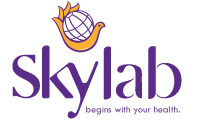No products in the cart.: ₹0.00
Vitamin D And Health
The incidence of Vitamin D deficiency in India is between 50-80%, according to diverse studies. Factors like low exposure to sunlight, the ageing-related decline in cutaneous synthesis, and inadequate consumption of Vitamin D contribute to the widespread prevalence of Vitamin D inadequacy, which has become a widespread health issue.
Bone disorders like Osteomalacia in children, rickets and osteoporosis among adults are associated with Vitamin D deficiencies.
Evidence from the literature suggests the fact that lower Vitamin D levels can be linked to the risk of falling more often and fractures, muscular muscles, pain and cardiovascular danger, diabetes polycystic Ovarian Syndrome (PCOS), infections, as well as autoimmune disorders.
Adequate consumption of Vitamin D is vital for all people of any age. Food fortification, exposure to sunlight and routine supplements can provide the required amount of Vitamin D.
What is Vitamin D?
Vitamin D is fat-soluble Vitamin found naturally in a small number of food items but is added to others and available as a nutritional supplement. It can also be produced endogenously by sunlight that hit the skin and stimulate Vitamin D synthesis.
Vitamin D, derived from sun exposure and food and supplements, is biochemically inert and needs two hydroxylations within the body to activate.
The first is produced within the liver and transforms Vitamin D to 25-hydroxyvitamin D [25(OH)D, also known as calcidiol. The second occurs primarily in the kidney and forms the physiologically active 1,25-dihydroxy vitamin D [1,25(OH)2D], also known as calcitriol.
Vitamin D aids in calcium absorption within the gut and ensures sufficient phosphate and calcium levels in the blood for normal bone mineralization to avoid hypocalcemic tetany.
The daily need for Vitamin D
The amount of Vitamin D required daily depends on your child’s age. Daily recommended amounts of Vitamin D from the Food and Nutrition Board (a national expert group) for various age groups are provided for each age group. International Units (IU):
Birth to Life Stage The recommended amount
Birth through 12 months 400 IU
Children aged 1-13 600 IU
Teenagers aged 14-18 600 IU
Adults aged 19-70 years 600 IU
Adults aged 71 and over 800 IU
Breastfeeding and pregnant women 600 IU
Who are at risk of Vitamin D deficiency?
Those at risk for deficiency include:
-
Baby is Breastfed since human milk is not a good source of nutrients.
-
Older adults are affected by the fact that their skins aren’t able to produce Vitamin D after exposure to light as effectively as when they were younger, and their kidneys aren’t as able to convert vitamin D into its active form.
-
People with dark skin due to their skin having a lower capacity to make Vitamin D from the sun.
-
People suffering from diseases like celiac illness: Vitamin D is a fat-soluble Vitamin that patients require when fat isn’t absorbed correctly as they deplete the Vitamins above.
-
Obese individuals have a reason for it, as their body fat binds certain Vitamin D and prevents it from entering the blood.
-
People who are exposed to sunlight are extremely small.
-
People with liver or kidney conditions.
Conditions that are caused by a deficiency in Vitamin D
The body can deficiency Vitamin D because they do not take in enough or absorb enough nutrients from their food items, their exposure to sunlight is not enough, or their kidneys don’t convert Vitamin D into its active form inside the body.
-
In children, Vitamin D deficiency is the cause of Rickets. It is a condition where the bones are soft and sag.
-
Vitamin D deficiency in adults results in Osteomalacia, muscle weakness, and bone pain.
Insufficient amounts of Vitamin D can be a factor in the formation of osteoporosis (thinning of bones), which could result in fractures.
How to combat insufficiency
Vitamin D can be obtained through:
-
SUN EXPOSURE
-
FOODS THAT CONTAIN VITAMIN D
-
SUPPLEMENTS
The body creates Vitamin D when the skin is exposed to the sun. Most people can meet at least a portion or all of their Vitamin D requirements this way.
Note: Despite the importance of sun exposure for Vitamin D synthesizing, Limiting skin exposure to the sun is advised to reduce the risk of skin cancer.
Dietary sources for Vitamin D are listed below.
People who are cautious about sun exposure or protect their skin with clothing or sunscreen should incorporate healthy food sources for Vitamin D into their diets or consider taking a supplement.
-
NATURAL
-
Oil from the cod liver (excellent source)
-
Fish – Mackerel, salmon and sardine.
-
Mushrooms
-
Egg yolks and cheese provide very little.
-
Foods with a fortification process ( Food fortification or enrichment refers to the method that adds the micronutrients (essential trace elements as well as vitamins) to food items.)
Vitamin D is added to a variety of breakfast cereals and certain brands of milk, orange juice, margarine, yoghurt and soy drinks (Please read the label on the item ).
The toxic effects of excess Vitamin D
Vitamin D toxicity, also known as Hypervitaminosis D, cannot result from sun exposure but from prolonged supplementation.
Excessive supplements can raise calcium levels in the blood and cause nausea, loss of appetite and vomiting, as well as excessive thirst and frequent urination. Itching muscles, joint discomfort and disorientation.
-
Calcification of soft tissues could also happen.



